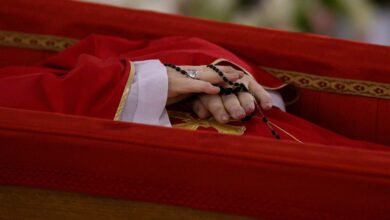NASA, Boeing prepare Starliner for next mission; crewed flight likely early 2026 | World News

It was supposed to be an eight-day mission—one that would prove Boeing’s Starliner’s capability as a crew transport to the International Space Station. But as NASA astronauts Sunita Williams and Butch Wilmore floated aboard the spacecraft in June 2024, they had no idea their journey home would take nine long months.Technical failures—five malfunctioning thrusters and helium leaks in the propulsion system—jeopardised Starliner’s return. NASA made the difficult call: the astronauts would have to wait for another ride. The spacecraft, originally meant to ferry them back, would return to Earth alone.
Finally, earlier this month, Wilmore and Williams touched down—only not in the Starliner they had launched in, but aboard SpaceX’s Crew Dragon capsule.
Story continues below this ad
Now, as Boeing and NASA work to bring Starliner back into action, the focus is on fixing its propulsion system and proving it is ready to safely transport humans again.
What went wrong?
Starliner’s troubles began soon after liftoff from Cape Canaveral on June 5, 2024. As the spacecraft approached the International Space Station, five of its 28 thrusters failed. The propulsion system, crucial for maneuvering and re-entry, also suffered helium leaks.
Despite the setbacks, Starliner managed to dock with the ISS the following day.
Story continues below this ad
But returning was a different story. With concerns over whether the spacecraft could execute a safe landing, NASA decided not to risk it. Starliner would return home without its crew, leaving Wilmore and Williams aboard the ISS to wait for an alternative ride back.
The spacecraft autonomously undocked on September 6, 2024, landing safely in the New Mexico desert. The astronauts, however, had to wait another six months before finally boarding SpaceX’s Crew Dragon on March 18, 2025, and returning home as part of the Crew-9 mission.
Preparing for the next mission: Is Boeing up for the challenge?
NASA and Boeing are now working to ensure Starliner’s propulsion issues don’t repeat themselves. This year, engineers will conduct extensive testing at White Sands Test Facility in New Mexico, firing thrusters to study how they perform under different conditions.
Story continues below this ad
“Once we get through these planned test campaigns, we will have a better idea of when we can fly the next Boeing mission,” said Steve Stich, manager of NASA’s Commercial Crew Program. “It is likely to be in the timeframe of late this calendar year or early next year for the next Starliner flight.”
Boeing is implementing key upgrades—thermal barriers will be added to prevent overheating, and thruster pulse profiles will be adjusted to enhance efficiency. Engineers are also testing new helium system seals to prevent leaks from recurring.
With over $2 billion already invested in Starliner, Boeing is under pressure to deliver.
Butch Wilmore, right and Suni Williams wait for liftoff inside a Boeing Starliner capsule at Space Launch Complex 41 in Cape Canaveral, Florida. June 5, 2024. (Photo: NASA via AP)
The company’s struggles with the spacecraft’s development have been well-documented, but NASA remains supportive, seeing Starliner as an essential component of its human spaceflight program.Story continues below this ad
“NASA’s strategy for crew transportation is critical for assured access to space using American private industry,” said Ken Bowersox, associate adminrator for Space Operations. “Our investment in commercial crew transportation capabilities is providing the needed flexibility to operate in space as safely as possible.”
What’s next?
NASA plans for Starliner’s next flight to be a full-fledged crewed mission. However, the agency remains flexible—if needed, the spacecraft may first be used for cargo transport. The overarching goal remains clear: to establish multiple, reliable ways of getting astronauts to and from the ISS.
(With inputs from NASA, Reuters)





